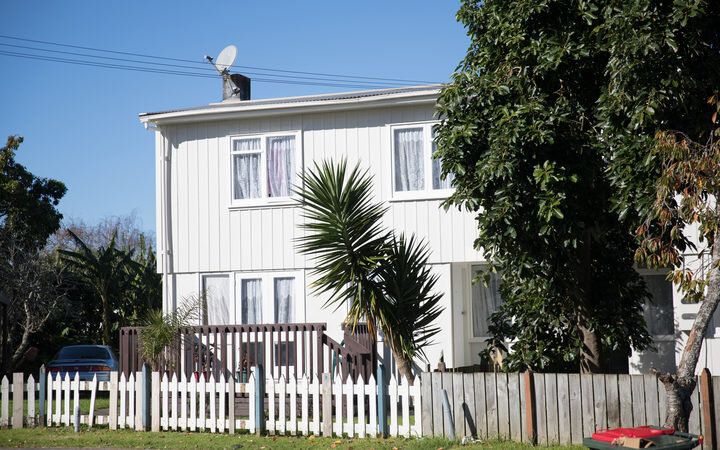India is a land of around 500 different languages, of which a majority are used even today. Sonal Kulkarni-Joshi talks about their diversity and traces their ancient global linkages
India’s society, culture, history and politics have continuously been shaped by the multiplicity of her languages. So, how many languages are spoken in India? The country is home to speakers of about 461 languages. Of these, 447 languages are actively used in daily communication, while 14 are extinct – they no longer fulfil any communication need. Among these, 121 languages have more than 10,000 speakers and 22 of these are officially recognised in the Indian Constitution. These include Assamese, Bengali, Bodo, Dogri, Gujarati, Hindi, Kannada, Kashmiri, Konkani, Malayalam, Manipuri, Marathi, Maithili, Nepali, Odia, Punjabi, Sanskrit, Santali, Sindhi, Tamil, Telugu and Urdu. These are referred to as the ‘scheduled languages’ and according to the nation-wide census conducted in 2011, 96.72 per cent Indians speak any one of these languages as their mother tongue. Hindi is spoken by a majority of the Indian population (26.6 %), followed by Bangla (7.94 %), Marathi (6.84 %) and Telugu (6.68 %). Of the scheduled languages, Hindi is recognised as the national official language; English is used at the national level as a subsidiary official language. Post-independence, several of India’s states followed the linguistic line, making the language spoken by most number of people its official communication tool: Marathi in Maharashtra, Bangla in West Bengal, Kannada in Karnataka and so on. Hindi and the other scheduled languages are also used as official languages in the states – they are used in regional administration and education. Thus, unlike many monolingual countries that have a single official language (eg Japanese in Japan, French in France and so on), there is no single ‘Indian’ language.
>
“EVERY LANGUAGE HAS ITS OWN SIGNIFICANCE, SANCTITY. INDIA TAKES GREAT PRIDE IN THE FACT THAT TAMIL IS THE MOST ANCIENT OF WORLD LANGUAGES. WE INDIANS ALSO FEEL PROUD THAT FROM VEDIC TIMES TO THE MODERN DAY, SANSKRIT LANGUAGE HAS PLAYED A STELLAR ROLE IN THE UNIVERSAL SPREAD OF KNOWLEDGE.”
Enumerating languages in India poses a unique challenge, largely because of the blurred distinction between language and dialect. Hindi and Urdu are regarded as separate languages in spite of very strong linguistic similarities between them, as are Marathi and Konkani. The Tangkhul dialects spoken in the state of Manipur are not all mutually intelligible, but the speakers regard these varieties as constituting a single language. According to the census of 2011, 43.6 per cent of the people speak Hindi as their mother tongue – this includes more than 40 dialects of Hindi such as Angika, Awadhi, Bagheli, Bhojpuri, Braj, Chhattisgarhi and so on. A large segment of Indians use their multilinguality to index multiple identities – local, regional, national and so on. Very often the knowledge of multiple languages is acquired not in school but in multilingual neighbourhoods. For example, a child belonging to a Bengali family living in Mumbai will converse in Bengali at home, speak the local language Marathi with neighbours and friends, and learn English and Hindi in school. This linguistic division is very characteristic of the Indian society.
THE LAnGUAGE FAMILIEs
Languages carry signatures of the varied ancestries of the people of the land. Hence, like people, languages can be classified into various ‘families’ based on the genealogical similarities among them. The main language families of India are the following: Indo-Aryan – this family includes major languages such as Hindi, Punjabi, Nepali, Marathi, Oriya, Bangla and Axomiya as well as tribal languages such as Bhili and Katkari. These languages have descended from the classical language Sanskrit via the Prakrits. In the present times, the speakers of this language family spread from Northwest India to the Northeast of India, occupying the plains of North India. The Dravidian family of languages includes four major, literary languages in southern India – Tamil, Malayalam, Kannada and Telugu – as well as a number of tribal languages such as Toda in the Nilgiri Hills and Gondi in central India. The Daic family of languages in Arunachal Pradesh and in Assam and the Andamanese language family in the Andaman islands are two smaller genealogical groups in the country.
THE GLOBAL LInks
Interestingly, all these Indian language groups share ancestry with languages from other parts of the world: Indo- Aryan languages are historically related to languages in Europe, which were derived from Latin and Greek. Thus, Bangla, Hindi, Persian, English, German and Dutch are all distant cousins. The Munda or Austro-Asiatic languages are genetically related to languages in Vietnam and Cambodia, while the Tibeto-Burman languages are relations of languages spoken in Nepal, Myanmar, Bhutan and China. The Munda group of the Austro- Asiatic languages includes Santali, Mundari, Ho and a few other tribal languages spoken in central India. The Tibeto-Burman family of languages is represented by languages such as Manipuri, Bodo and almost a hundred other tribal languages spoken in Northeast India. Speakers of the different language families are said to have arrived in the Indian sub- continent at different times in history; the ancestors of the speakers of the Great Andamanese language belonged, perhaps, to the first migration of humans out of Africa into South and South-East Asia.
THE WRITTEN WORD
>
“Ode to the Indian languagesindi is the third most spoken language in the world today after English and Mandarin Chinese.
In terms of the largest number of native speakers, Hindi, Bengali and Marathi are ranked among the top 10 languages of the world.According to a study published by the UNESCO in 2010, India, with 197 endangered languages, had the highest rate of language loss in the world. 156 of Indian languages 10,000 persons and 93 of these languages are spoken in the Northeastern states of India and in Jammu and Kashmir. 2019 was declared by the United Nations as the International Year of Indigenous Languages, with a resolution to continue fostering indigenous languages and pass on their knowledge to future generations.
Tamil and Sanskrit are the oldest attested languages in India. Earliest records in Old Tamil include some cave inscriptions (2nd century BC) and a long grammatical and poetic treatise, Tolkāppiyam (1st century BC.) The Sangam literature, a collection of 2,381 poems, is the most ancient literary works in Old Tamil.”
Language in India has a complex relation with writing. Not all Indian languages are written, though they have a rich oral tradition. The development of writing is associated mainly with commercial record- keeping rather than any religious or social activity. Scripts used in the present day for writing all Indian languages are predominantly derived from the Brahmi script. Devanagari or Nagari, its modern derivative, is used to write Hindi, Marathi, Konkani and Sanskrit. The recitation of Devanagari system follows a phonetic order in which vowels precede the consonants. Symbols of the writing system are ordered such that sounds produced at the back of the mouth cavity (ka, kha, ga, gha) are followed by those produced progressively in the front of the mouth cavity (cha, chha, ja, jha and pa, pha, ba, bha). Another characteristic of the writing system is that the vowel is inherently present in the consonant symbol. Local scripts were devised and adopted for some languages – for example, Ol Chiki for Santali in Jharkhand, West Bengal and Odisha; Kaithi and Tirhuta for Maithili. Some Indian languages are written in more than one script – Devanagari and Perso-Arabic for Sindhi; Devanagari, Malayalam, Kannada, Perso-Arabic and Roman for Konkani.
Irrespective of their varying ancestries, the speakers of the various Indian languages do not live in isolation. Over millennia, they have intermingled for social, economic and other reasons. In the process, their languages have been enriched with words and constructions from the surrounding languages. Such processes of assimilation and convergence define the Indianness of the multitude of languages, highlighting the unity underlying the country’s linguistic diversity.
Sonal Kulkarni-Joshi is Professor in Linguistics at the Deccan College (Deemed University), Pune. She received her doctoral degree in Linguistics at the Reading University in England. Her research interests include the study of language change, mapping of dialectal variation, diaspora languages and the effect of migration on language







